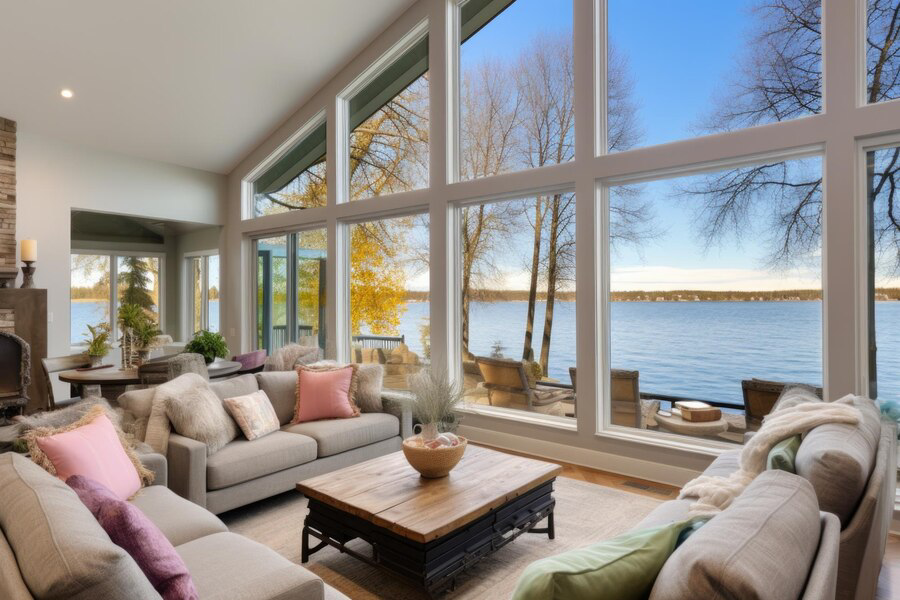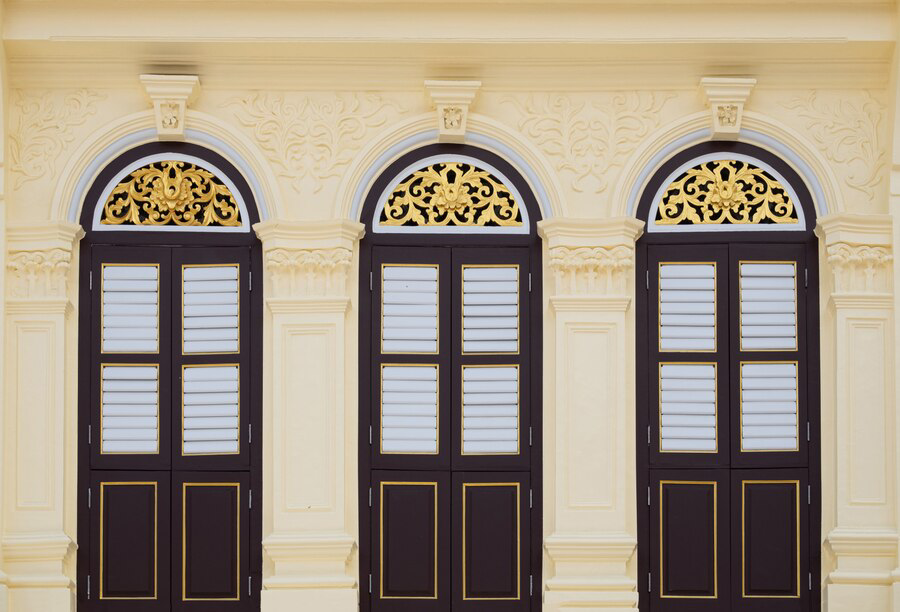
Maximizing Energy Efficiency with New Window Replacements
In an era increasingly focused on sustainability and energy conservation, upgrading your windows can significantly enhance both the comfort of your home and its energy efficiency. New window replacements offer a multitude of benefits beyond aesthetics, particularly when it comes to maximizing energy efficiency. Modern advancements in window technology provide superior insulation, reducing heat loss in winter and heat gain in summer. This not only improves indoor comfort year-round but also lowers energy bills by reducing the strain on heating and cooling systems. Moreover, new windows often come equipped with features like low-emissivity (low-E) glass coatings and multiple panes filled with insulating gases, further enhancing their thermal performance. These innovations help maintain stable indoor temperatures while minimizing the need for artificial heating or cooling. As homeowners increasingly seek ways to reduce their carbon footprint and utility costs, investing in energy-efficient window replacements proves to be a wise and environmentally responsible choice. Stay tuned to discover more about the latest advancements in window technology and how they can transform your home into a beacon of energy efficiency and sustainability.
Technological Advances in Energy-Efficient Window Design
Advancements in window technology have revolutionized energy efficiency in homes and buildings. Modern energy-efficient windows incorporate innovative materials and design features that enhance insulation, minimize heat transfer, and reduce energy consumption. These technological advancements not only contribute to lower utility bills but also improve comfort levels by maintaining consistent indoor temperatures and reducing noise pollution.

Low-Emissivity (Low-E) Coatings
Low-E coatings are microscopically thin layers of metallic oxide applied to the glass surface of windows. They are designed to reflect infrared light while allowing visible light to pass through. This property helps to reduce heat transfer, keeping homes cooler in summer and warmer in winter. Low-E coatings can significantly improve the energy efficiency of windows without compromising visibility.
Gas Fills (Argon or Krypton)
Argon and krypton gases are denser than air and are often used to fill the space between panes in double or triple-pane windows. These gases reduce heat transfer by minimizing convection currents within the window. Argon and krypton-filled windows provide better insulation compared to air-filled windows, resulting in improved energy efficiency and thermal performance.
Warm Edge Spacers
Warm edge spacers are materials placed between the panes of insulated glass units (IGUs) to maintain the structural integrity of the window and reduce heat transfer at the edge of the glass. Traditional metal spacers conduct heat and can contribute to energy loss. Warm edge spacers, typically made from low-conductivity materials such as foam or composite materials, help to improve the overall thermal performance of windows.
Triple Pane Windows
While double-pane windows are effective at improving energy efficiency compared to single-pane windows, triple-pane windows take insulation a step further. They consist of three layers of glass separated by gas fills, offering enhanced thermal performance and sound insulation. Triple-pane windows are particularly beneficial in cold climates where minimizing heat loss is crucial.
Dynamic Glazing Technologies
Dynamic glazing technologies, such as electrochromic and thermochromic windows, allow for control over the amount of light and heat entering a building. Electrochromic windows use a small electrical charge to tint the glass, reducing glare and solar heat gain during peak sunlight hours. Thermochromic windows change tint based on temperature variations, adapting to environmental conditions to optimize energy efficiency.
Choosing the Right Window Frame Material for Energy Efficiency
Choosing the right window frame material is crucial for maximizing energy efficiency in your home. Windows play a significant role in insulation, affecting both heating and cooling costs throughout the year. Different materials offer varying levels of insulation, durability, and maintenance requirements. Here are eight common window frame materials to consider:
Wood
Known for its traditional aesthetic appeal, wood frames provide excellent insulation. They offer natural thermal resistance, which helps in reducing energy transfer. However, wood requires regular maintenance to prevent warping or rotting from moisture.
Vinyl
Vinyl frames are popular due to their affordability and low maintenance. They provide good insulation and are resistant to moisture, making them suitable for various climates. However, their color options may be limited, and they can degrade over time with exposure to extreme temperatures.
Fiberglass
Fiberglass frames are durable and low-maintenance, offering excellent insulation properties. They expand and contract at rates similar to glass, reducing the risk of seal failure. Fiberglass is also resistant to warping, rotting, and swelling, making it ideal for harsh climates.
Aluminum
Aluminum frames are strong, lightweight, and require minimal maintenance. They are also recyclable and often used in modern architectural designs. However, aluminum is a poor insulator and can contribute to heat loss through conduction unless properly thermally broken.
Composite
Composite frames combine various materials, such as wood fibers and plastic polymers. They offer good insulation properties and are resistant to moisture and rot. Composite frames can mimic the appearance of wood while providing better durability and lower maintenance.
Calculating Energy Savings with New Windows
Replacing old, inefficient windows with energy-efficient ones can lead to significant savings on your energy bills. Calculating these savings involves considering several factors:
- Energy Efficiency Ratings: Look for windows with Energy Star certification or similar ratings that indicate their efficiency in different climates.
- Utility Rates: Understand your local utility rates to estimate how much energy savings will translate into monetary savings.
- Climate and Weather Conditions: Consider how your climate affects heating and cooling needs, and how new windows will impact indoor comfort.
- Window Orientation and Size: Evaluate factors like window size, orientation (north, south, east, west-facing), and shading to determine potential energy gains or losses.
Conclusion
Upgrading to energy-efficient windows is a smart investment that offers both immediate and long-term benefits for homeowners. By replacing outdated windows with high-performance alternatives, such as those offered by EZ Window Solutions of Strongsville, residents can significantly reduce energy consumption and utility costs. These modern windows are designed to minimize heat loss in winter and keep interiors cooler during summer, enhancing overall comfort year-round. Moreover, they contribute to a smaller carbon footprint, supporting environmental sustainability efforts.
For more information on how new window replacements can maximize energy efficiency in your home, contact EZ Window Solutions of Strongsville today. Our team is dedicated to helping you choose the best window solutions tailored to your needs and budget. Reach out at +1 (440) 230-3838 to schedule a consultation or visit our showroom in Strongsville, Ohio. Discover firsthand how our expertise and quality products can transform your home into a more energy-efficient and comfortable living space.


Write a Comment